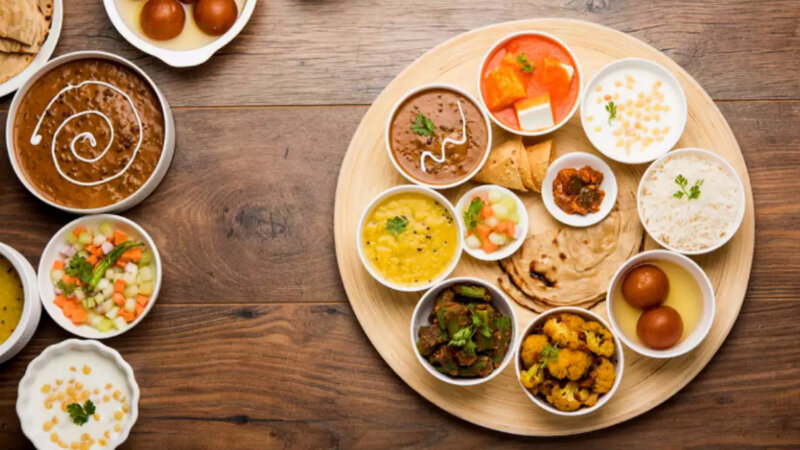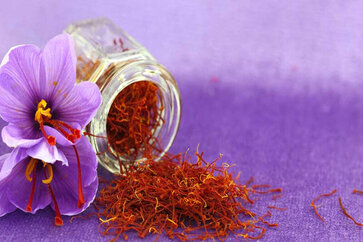The 6 Tastes Of Ayurveda – How Do It Affect Our Body?
Ayurveda regards food and spices as medicinal substances, and good digestion is one of the main factors for optimal health. 
That is why he places great emphasis on the correct combination of food and the concept of shad-ras, or six flavors. These six flavors – sweet, sour, salty, pungent, bitter, and astringent – should be present in the diet in balanced proportions.
Understanding our individual constitutions can help us to make better choices to promote and maintain our health. According to Ayurveda, we are born with a unique constitution, which is an individual combination of three doshas or principles that govern the function of our body at the physical, mental, and emotional levels.
These constitutions are known as Vata, pitta, and Kapha. The disease is caused by an imbalance in any of the doshas and the presence of ama or toxic by-products (food that has not been completely digested).
1. Vata: is subtle energy associated with movement. It controls respiration, blood circulation, and excretion, as well as heartbeat and motor neuron impulses. In an exacerbation, it can cause disorders such as flatulence, constipation, tremors, spasms, asthma, rheumatoid arthritis, and osteoarthritis, as well as many neurological problems.
2. Pitta: represents the fire element in the body. Along with body temperature, it also regulates metabolism, absorption, digestion, nutrition, and assimilation. Pitt-type disorders include acidity, ulcers, all sorts of skin rashes, chronic fatigue, Crohn’s disease, colitis, and numerous inflammation.
3. Kapha: is the energy that shapes the structure of the body and provides lubrication to joints and organs. Imbalance in Kapha can cause problems such as obesity, high cholesterol, diabetes, edema, asthma, tumors, and various congestive disorders.
According to Ayurveda, the six tastes in Sanskrit below which are the best preventive medicine and support for the natural healing process is a diet and lifestyle that suits the constitutional needs of a person and matches the seasons and cycles of nature.
1. Actions of sweet flavor (Madhura Rasa Karma)
Accustomed to this flavor from birth, it produces great tissue strength (dhatus), it is very valuable for children, the elderly, the wounded, the emaciated.
It is good for the skin (color), hair, sense organs, and the essence of the seven categories of tissue elements is called Ojas, which is responsible for the strength and vitality of the body.
It is good for the throat, increases milk production (in the chest), binds bone fractures, etc.; it is not easily digestible, it prolongs life, it helps in the activities of life; it is oily, soothes Pitta, Vata, and poison (Visha).
Overuse causes diseases due to fat and Kapha, obesity, dyspepsia, unconsciousness, diabetes, enlargement of the glands in the neck, etc., malignant tumors (cancer), and other diseases.
2. Actions of Acid or Sour Taste (Amla Rasa Karma)
This flavor stimulates digestive activity (Agni), is oily, good for the heart, digestive, appetite stimulant, hot potency, cool to the touch (refreshing in external applications, relieves the burning sensation).
It also causes humidification, satiates, is easy to digest, increases Kapha, Pitta, and blood (Asra), and causes inactive Vata to move downward.
Used in excess, it causes sagging of the body, loss of strength, blindness, dizziness, itching (irritation), pallor (yellow-white discoloration as in anemia), herpes, swelling, smallpox, thirst, and fever.
3. Salty flavor actions (Lavana Rasa Karma)
This flavor removes stiffness, clears blockages in channels and pores, increases digestive activity, lubricates, causes sweating, penetrates tissue, improves flavor, causes lacerations and rashes (tissue, new growth, abscesses, etc.).
Used in excess, it causes increased blood (Asra) and Vata, baldness, graying of hair, skin wrinkles, dryness, skin diseases, herpes (Visarpa), and decreased body strength.
4. Actions of bitter taste (Tikta Rasa Karma)
This flavor itself is not appreciated. It acts on anorexia, worms (bacteria, parasites, etc.), loss of consciousness, fever, nausea, burning sensation, soothes Pitta and Kapha.
It dries out moisture, fat, muscle fat, marrow, feces, and urine is easily digestible, increases intelligence, cold in potency, causes dryness, clears breast milk and throat. Used in excess, it causes tissue depletion (dhatus) and diseases of Vata origin.
This flavor cures throat ailments, allergic rashes, dropsy, and other skin conditions. Alasaka (a type of indigestion), swelling (edema); reduces swelling of ulcers, dries out fat and moisture.
It increases hunger, is digestive, improves taste, clears doshas, dries moisture from food, breaks hard masses, dilates (expands) channels, and relieves increased Kapha.
Used in excess it causes dryness, depletion of sperm (Sukra or element of reproduction and strength), causes fainting, tremors, and pain in the waist, back, etc.
6. Actions of Astringent Flavor (Kashaya Rasa Karma)
This flavor relieves increased Pitta and Kapha; not easily digestible; clears the blood, causes compression and healing of ulcers (wounds), of cold potency, dries out moisture and fat
It delays the digestion of indigestible foods, absorbs water, causing constipation; it causes dryness and cleans the skin. Its excessive use causes food to remain undigested, flatulence, pain in the heart region, dryness, emaciation, loss of virility, obstruction of the canals, and constipation.
Remember your kitchen cabinet is your medicine cabinet because every food you eat such as herbs, spices have medicinal and nutritional value.



























Ayurveda also insists that the dietary needs of each and every individual are different and hence specific body constitutions need specific diet and taste.